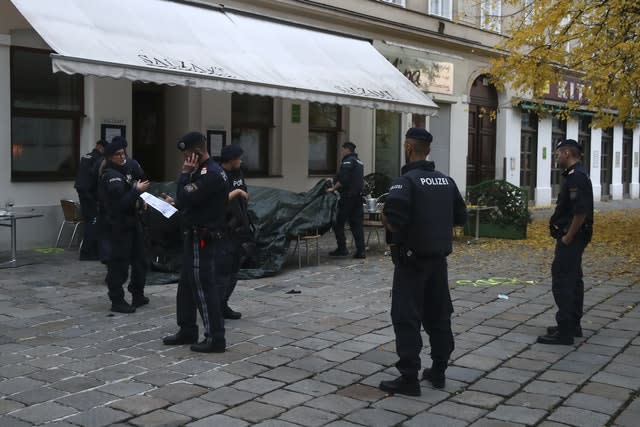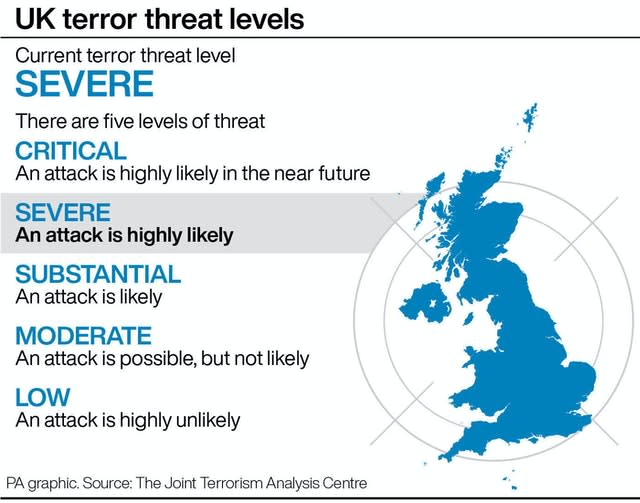What is the UK terror threat level and how does it change?
The official terror threat level for the UK has been raised from “substantial” to “severe” following the recent Islamist attacks in mainland Europe.
But Home Secretary Priti Patel announced on Tuesday that the official terror threat level had been raised “as a precautionary measure and is not based on any specific threat”.
Here, the PA news agency explains how the threat level system works:
– What does the severe rating mean?

That authorities believe an attack in the UK is “highly likely”.
– How many levels are there?
Severe is the second highest out of five, behind critical which means an attack is expected imminently. The other three levels are substantial (an attack is a strong possibility), moderate (an attack is possible but not likely), and low (an attack is unlikely).
– Who decides the threat level?
A body called the Joint Terrorism Analysis Centre (JTAC), which was established in June 2003 and is based at MI5’s London headquarters.
The independent Joint Terrorism Analysis Centre has changed the UK national terrorism threat level to SEVERE.
This means that a terrorist attack is highly likely.
People should be alert but not alarmed & report concerns to the police.
Read more: https://t.co/JiKoBi87US pic.twitter.com/XVRRlnESHm
— Home Office (@ukhomeoffice) November 3, 2020
The JTAC is comprised of representatives from 16 Government departments and agencies.
– How is a judgment reached on the threat level?
A number of factors may be taken into account, including available intelligence, terrorist capability and terrorist intentions.
– How has the threat changed over the years?
The level was first made public in 2006. Since then, it has most often been at the severe level, and not been lower than substantial.
The critical level has been in place four times over the 14-year period: in August 2006, following a plot to detonate explosives on transatlantic flights; June 2007 over an attempted car bomb attack at Glasgow Airport; and in May and September 2017 after the Manchester Arena bombing and the Parsons Green District line attack respectively.
The UK’s rating was downgraded to severe a few days after the Parsons Green incident and remained there until it was lowered to substantial in November 2019, although Ms Patel said at the time the risk of an attack was still “likely”.

– How long does a threat level remain in place?
It depends on how high it gets. The threat level has only stayed at critical on each occasion for a matter of days and is usually downgraded once authorities have arrested suspects or are confident there is no immediate risk of another attack.
The JTAC reviews the terror level every six months but does not always raise it following attacks. It considered increasing the level to severe just weeks after the downgrading in November 2019 after the London Bridge Fishmongers’ Hall attack but kept it at substantial.

 Yahoo Finance
Yahoo Finance 